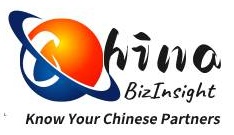For any overseas business partnering with or investing in Hong Kong companies, verifying the legitimacy and competence of leadership isn’t optional—it’s critical for risk management. Directors wield significant power over corporate decisions, finances, and compliance. Yet hidden risks like shadow directors, improperly appointed leaders, or undisclosed liabilities can derail partnerships, trigger legal penalties, or enable fraud.
Hong Kong’s Companies Ordinance (Cap. 622) establishes strict rules governing director eligibility, conduct, and liability. Sections 456–464 define these guardrails, emphasizing transparency and accountability. This guide unpacks these provisions and provides actionable steps to audit leadership risks.
Key Legal Provisions: Who Can (and Cannot) Serve as a Director
Hong Kong law erects clear barriers to prevent unfit individuals from holding directorship. Violations void appointments and expose companies to penalties.
1. Prohibition on Corporate Directors (Sec. 456)
- Rule: Public companies, guarantee companies, and private firms within a listed group cannot appoint corporate entities as directors. Only natural persons are permitted.
- Why It Matters: Corporate directors obscure ultimate human control, complicating accountability. This ban ensures traceability to real individuals.
- Risk Spotlight: If a shell company is illegally appointed, all its actions (e.g., contracts, loans) become voidable. Courts may still hold shadow directors (de facto controllers) liable.
2. Minimum Age Requirement (Sec. 459)
- Directors must be at least 18 years old. Minors cannot legally bind a company.
- Practical Tip: Always request ID copies (e.g., HKID card/passport) to verify age and identity.
3. Requirement for Natural Person Directors (Sec. 457)
- Private companies (outside listed groups) must have at least one human director. This prevents fully automated control.
4. Reserve Directors for Single-Member Firms (Sec. 455)
- If a private company has only one member (who is also the sole director), it may nominate a “reserve director” to act upon the director’s death.
- Conditions:
- The reserve must be ≥18 years old.
- Nomination ceases if the sole director resigns or the company structure changes.
- Due Diligence Step: Confirm reserve director details in the company’s Articles of Association.
Shadow Directors: The Hidden Liability Threat
A “shadow director” (Sec. 2) is any person not formally appointed but whose instructions the board routinely follows. Examples include:
- A parent company’s CEO dictating a subsidiary’s operations.
- A founder who resigned but still controls major decisions.
Legal Consequences:
- Shadow directors bear the same duties and liabilities as formal directors (e.g., fiduciary care, skill, diligence).
- They can be prosecuted for breaches like fraudulent trading or negligence.
Case Study: Re Hydrodam (Corby) Ltd [1994]
A UK parent company’s directors were deemed shadow directors of its insolvent subsidiary. They were held personally liable for wrongful trading after ignoring the subsidiary’s financial collapse. Though a UK case, Hong Kong courts frequently reference this precedent.
How to Audit Director Legitimacy & Uncover Risks
Use this checklist to verify directors and expose red flags:
| Check | Method | Risk if Non-Compliant |
|---|---|---|
| Age & Identity | Validate ID docs (HKID/passport) against CR filings. | Void contracts; fines under Sec. 459. |
| Corporate Directorship | Scrutinize Register of Directors—only natural persons allowed. | Legal invalidity of board decisions. |
| Shadow Control | Review board minutes: Who proposed key votes? Interview key staff. | Personal liability for undisclosed controllers. |
| Reserve Director Status | Confirm nomination in Articles + Registrar filings (Form ND2B). | Leadership vacuum upon death/incapacity. |
| Disqualifications | Search HK’s Disqualified Directors Database (free on CR.gov.hk). | Criminal penalties; reputational damage. |
🔍 Critical Resource: The Hong Kong Company Registry offers free director/disqualification searches. For comprehensive reports, including cross-owned entities and litigation history, use a verified Hong Kong Company Report.
Mitigating Director Liability: Lessons from Legal Precedents
Case Study: Securities and Futures Commission v. Sun Min (2020)
- Issue: A non-executive director (NED) of a Hong Kong-listed company failed to scrutinize suspicious financial statements.
- Outcome: The NED was fined HK$450,000 and disqualified for 3 years. The court ruled her “willful blindness” breached her duty of skill and care (Sec. 465).
- Takeaway: Directors must actively question mismanagement—even if not involved daily.
When Directors Are Removed or Resign (Sec. 462–464)
- Removal: Shareholders may remove directors by ordinary resolution. Special notice (28 days) is required. Directors can protest in writing or at the meeting.
- Resignation: Directors may resign anytime (unless restricted by Articles). Companies must file notice to the Registrar within 15 days.
- Post-Departure Risks: Resigned directors remain liable for breaches during their tenure.
Protect Your Business: Action Steps
- Verify Directors Proactively:
- Use official Registries and third-party reports to confirm appointments, age, and disqualifications.
- Identify Shadow Influence:
- Analyze decision-making patterns and cross-check ownership structures.
- Document Everything:
- Maintain records of due diligence to shield against “should-have-known” liability.
💡 For High-Risk Scenarios: Deep-dive reports like our Executive Risk Report track directors’ hidden affiliations, litigations, and regulatory penalties across Greater China.
Final Thoughts
Hong Kong’s director liability rules exist to uphold corporate integrity—but they also create minefields for uninformed partners. By auditing leadership against Sections 456–464 and leveraging robust verification tools, foreign businesses can avoid costly legal entanglements. Remember: Behind every company’s success are directors who are either assets or liabilities. Ensure yours are the former.
